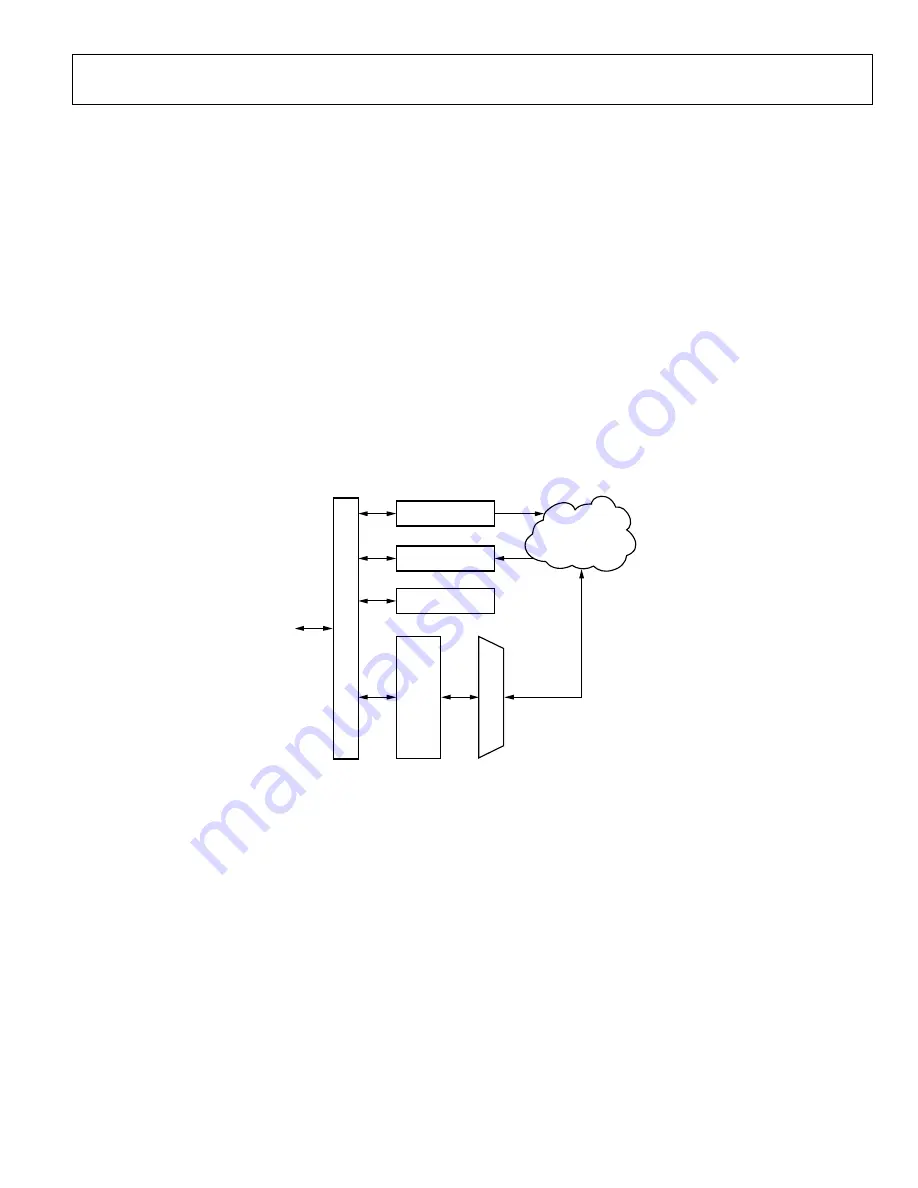
UG-1262
Rev. B | Page 303 of 312
CYCLIC REDUNDANCY CHECK
The CRC accelerator on the digital die computes the CRC for a block of memory locations on the digital die only. The exact memory
location can be in the SRAM, flash, or any combination of memory mapped registers. The CRC accelerator generates a checksum that
can be compared to an expected signature. The final CRC comparison is the responsibility of the MCU. CRC function is not supported
for the AFE die blocks.
CRC FEATURES
The CRC, used by the
MCU, supports the following features:
Generation of a CRC signature for a block of data.
Programmable polynomial length of up to 32 bits.
Operates on 32 bits of data at a time.
MSB first and LSB first CRC implementations.
Various data mirroring capabilities.
Initial seed to be programmed by user.
DMA controller (using software DMA) can be used for data transfer to offload workload from the MCU.
CRC FUNCTIONAL DESCRIPTION
The following sections detail the functionality of the CRC. Control for address decrementation and incrementation options for computing the
CRC on a block of memory is in the DMA controller, and details on these options can be found in the DMA Controller section.
CRC POLYNOMIAL
CRC RESULT
CRC CONTROL
CRC
INPUT
DATA
M
IRRO
R
O
P
T
IO
N
S
A
P
B
IN
T
E
RF
AC
E
CRC
COMPUTATION
16
675-
156
Figure 66. CRC Block Diagram
CRC Architectural Concepts
The CRC accelerator works on 32-bit data words, which are either fed to the block through the DMA channel dedicated to the CRC
accelerator or directly by the MCU. The CRC accelerator guarantees immediate availability of the CRC output.
CRC Operating Modes
The accelerator calculates CRC on the data stream it receives, 32 bits at a time. The CRC is then written into the block using either the
DMA engine or via the MCU directly.
The CRC works on 32-bit data words. For data words less than 32 bits in size, the MCU must pack the data into 32-bit data units. Data
mirroring on the input data can be performed at bit, byte, or word level (only for 32-bit data) by setting CTL, Bits[4:2].
When operating, the CRC algorithm runs on the incoming data stream written to the IPDATA register. For every new word of data
received, the CRC is computed and the result register is updated with the calculated CRC. The CRC accelerator guarantees the
immediate availability of the CRC result up to the current data in the result register.
The CRC engine uses the current result for generating the next result when a new data word is received. The result register can be
programmed with an initial seed. The bit width of the seed value for an x-bit polynomial must be x. The seed must be justified in the
result register.










































